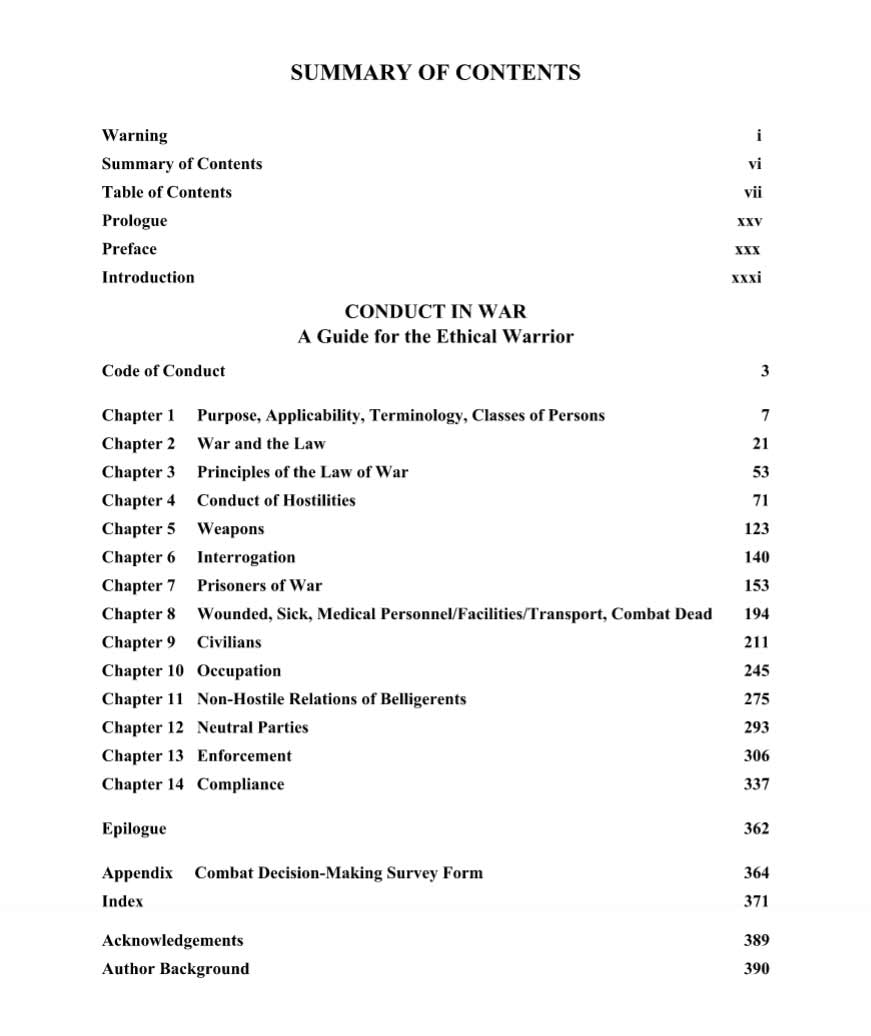Conduct in War, A Guide for the Ethical Warrior (the “Manual”) is a redrafting of the law of war and U.S. military manuals as an unofficial, unauthorized guide for combatants as to responsible, ethical conduct in war. Active-duty military, veterans, lawyers, and those with no legal or military background contributed to that found in its pages.
Unlike official manuals which tend to require full compliance with the formal law of war, this Manual recognizes that an action which violates the law as written may be morally and operationally permissible if it might better achieve the purposes for which the law was established.
The Manual is not intended to be an all-encompassing scholarly or legal reference work or textbook. It should not be considered legal advice or opinion provided by an attorney. It simply reflects the beliefs of one combat soldier based on his experiences, readings, training, education, conversations, and reflections.
Nonetheless, that outlined in the Manual is conduct a combatant has a moral and operational right to at least consider—and then possibly follow. Hopefully, it will provide combatants a basic understanding of the law and how, when making decisions, they might at times deviate from it and be aware of the possible legal risks of doing so.
While the Manual often differs materially from FM 27-10 (The Law of Land Warfare), FM 6-27 (The Commander’s Handbook on the Law of Land Warfare), the DOD Law of War Manual, and the Operational Law Handbook, generally this is not due to their professional or legal shortcomings. Rather this Manual’s purpose is different. Official manuals delineate that required under the formal law of war based on U.S. interpretations and policy. This Manual presents that which may better reflect how ethical combatants might believe the law, policy, and regulations should be written.
The Manual is not ideal as a quick reference for combat commanders and NCOs given its length; blend of international law, U.S. policy, and positions of the Manual; and commentary as to differences. Yet, its positions are believed to be more relevant for combatants than other manuals and texts now available.
“Our young men had to harden their hearts to kill proficiently, without allowing indifference to non-combatant suffering to form a callus on their souls. I had to understand the light and the dark competing in their hearts because we needed lads who could do grim, violent work without becoming evil in the process, lads who could do hard things yet not lose their humanity”
General Jim Mattis, U.S. Marine Corps
Casualties of author’s battalion during first year in Vietnam (recorded on his last day with unit)
US Soldier part of response and recovery team after Taliban ambush of Afghani resupply convoy during which six drivers were beheaded.



